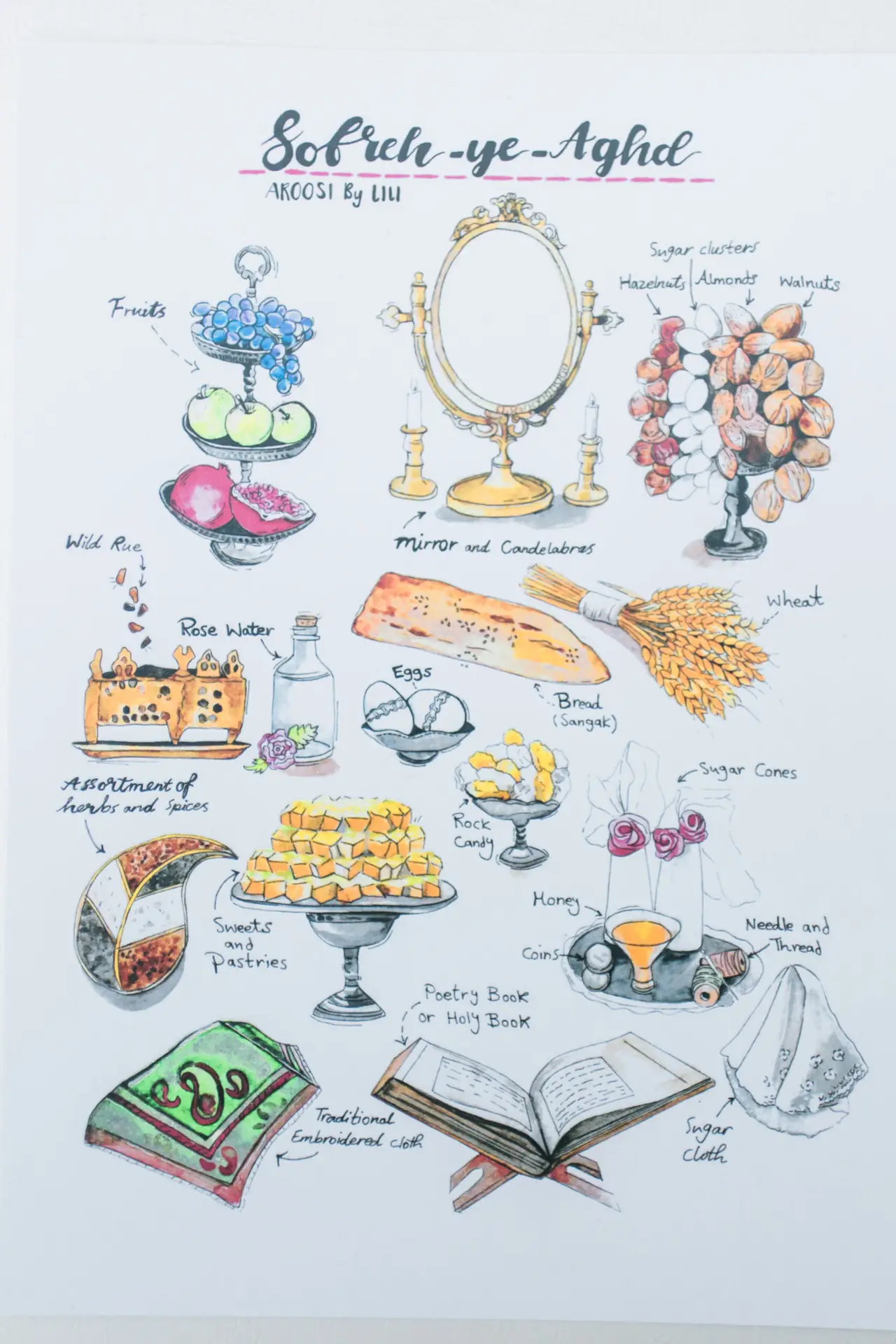
A Persian wedding is rich in cultural traditions, and one of the most beautiful and symbolic elements of the ceremony is the Sofreh-ye-Aghd. This elaborate spread, decorated with carefully chosen items, serves as a visual representation of the couple’s journey together, with each object carrying deep meaning. If you’re planning a Persian wedding or are simply curious about the tradition, this itemized guide to the Sofreh-ye-Aghd will explain the symbolism behind each element.
The Sofreh-ye-Aghd is a ceremonial spread that includes various symbolic items, each representing an aspect of the couple’s marriage and future life together. It’s typically laid out on the floor during the wedding ceremony, and the couple, along with their loved ones, gather around it as they partake in the rituals. The items on the Sofreh represent love, prosperity, fertility, and protection, providing a meaningful start to the couple’s life as newlyweds.
The Blessed Bread (Naan-e-Sangak)
Assortment of Herbs & Spices (Aatel-o-Baatel)
Honey (Asal)
Rock Candy (Shaakheh-e-Nabaat)
Persian Rose Water (Gol-ab)
This embroidered cloth is held over the couple’s heads during the sugar rubbing ceremony, symbolizing the home they will build together
Sweet & Pastries (Shirini)
The Book (Ketaab)
Sugar Cones (Kalleh Ghand)
Decorated Eggs (Tokhm-e-Morgh)
Decorated Nuts (Gerdoo/Baadaam/Fandogh)
Mirror and Candelabra (Ayneh-ye-Bakht va Shamdaan)
The mirror symbolizes the couple’s first look at one another, while candles represent light, clarity, and the bright future ahead
Sugar Clusters (Noghl)